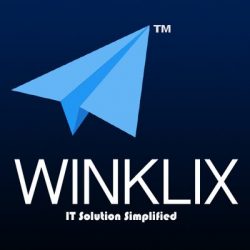In today’s fast-paced digital world, user experience (UX) is a critical factor in determining the success of a mobile app. One often-overlooked yet powerful UX element is microinteractions. These small, functional animations and feedback loops play a significant role in enhancing user engagement, guiding users, and making apps feel more intuitive and enjoyable.
What Are Microinteractions?
Microinteractions are subtle design elements that respond to user actions, providing instant feedback and improving usability. They are present in almost every app interaction, from the swipe-to-refresh action on social media feeds to the typing indicator in messaging apps. Microinteractions make interactions seamless, helping users understand app functions effortlessly.
Key Components of Microinteractions
- Trigger: This initiates the microinteraction, such as a button press, swipe, or system event.
- Rules: Define what happens when the trigger is activated.
- Feedback: Provides visual, auditory, or haptic response to indicate the result of an action.
- Loops & Modes: Determine whether the interaction repeats or changes over time.
The Impact of Microinteractions on User Engagement
1. Enhancing User Experience
Microinteractions create a more fluid and natural user experience by offering instant feedback. For example, a heart animation when liking a post on Instagram provides immediate gratification, reinforcing engagement.
2. Guiding Users Through the App
Well-designed microinteractions act as visual cues that guide users, making navigation more intuitive. A progress bar, for example, indicates loading times or the completion status of a task.
3. Boosting User Retention
Apps that feel engaging and responsive keep users coming back. Microinteractions add delight to the experience, making users more likely to continue using an app.
4. Reducing User Frustration
Microinteractions provide instant feedback, ensuring users know their actions are recognized. A shaking password field when incorrect credentials are entered, for instance, helps users quickly realize their mistake.
5. Encouraging User Actions
By making interactions fun and rewarding, microinteractions can encourage users to complete desired actions. Gamification elements, such as confetti animations upon completing a task, make the app feel more engaging.
Best Practices for Implementing Microinteractions
1. Keep Them Subtle
Microinteractions should enhance the experience without overwhelming the user. Avoid excessive animations or distractions.
2. Ensure Functional Relevance
Every microinteraction should serve a purpose. If it doesn’t improve usability or engagement, it may not be necessary.
3. Maintain Consistency
Use a consistent design language throughout the app. Repetitive but cohesive microinteractions help establish familiarity and build trust.
4. Test for Performance
Ensure that microinteractions do not slow down the app’s performance. Overuse of animations may impact loading times and responsiveness.
Conclusion
Microinteractions are a crucial yet often understated aspect of mobile app UX design in New York . They help bridge the gap between users and technology, making interactions feel natural, engaging, and satisfying. By strategically integrating microinteractions, developers can significantly enhance user engagement, retention, and overall app experience.
Are you looking to improve your mobile app’s user experience? Implementing microinteractions effectively could be the game-changer your app needs!
Contact Winklix today – the leading mobile app development company in New York .




